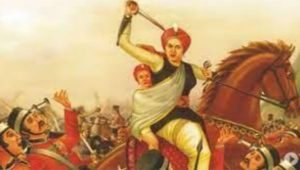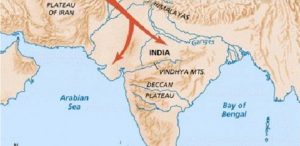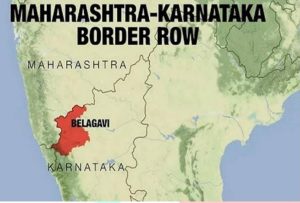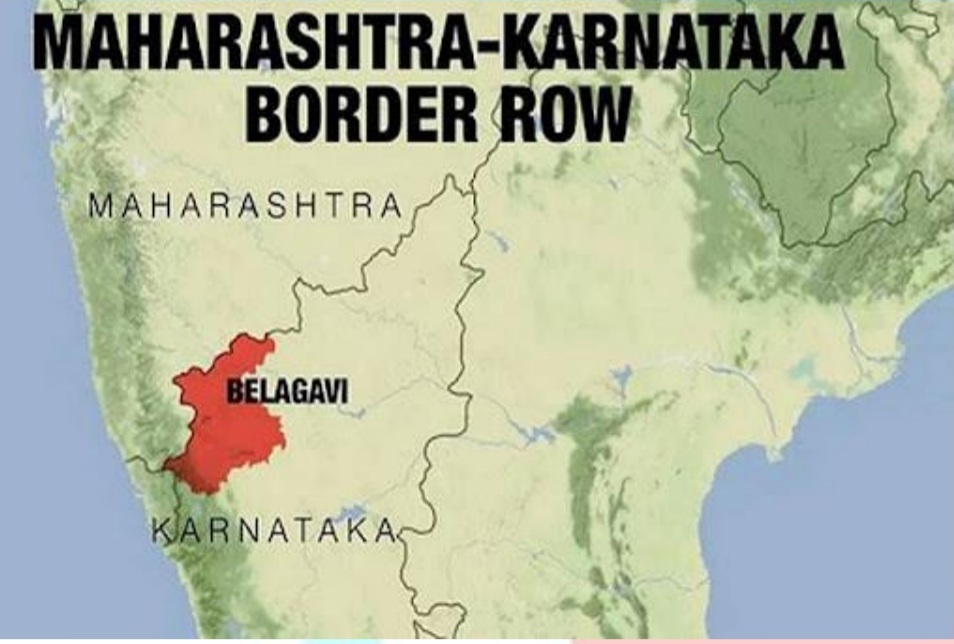CURRENT AFFAIRS 31-12-2021
Daily Current Affairs – Topics
1.Rani Lakshmibai
#GS1- Significant events and Personalities
Context:
- Veerangana Lakshmibai Railway Station will be renamed Jhansi Railway Station in Uttar Pradesh.
In depth information

The following is the procedure for changing the name of a railway station:
- The Uttar Pradesh government has previously submitted a petition to the Union Home Ministry to rename the station.
- After receiving no objections from the Union Ministry of Railways, the Survey of India, and the Department of Posts, the ministry agrees to a name change of any station or place.
- These organisations affirm that no town or hamlet with a name that is similar to the proposed name exists in their records.
- The Ministry of Railways will alter the station code whenever the name change is approved as a result of an executive order.
Rani Lakshmibai’s biography:
- Manikarnika Tambe was born in Varanasi, Uttar Pradesh, on November 19, 1828.
- In 1842, Rani married Raja Gangadhar Newalkar, the King of Jhansi.
The British and Rani Lakshmibai’s battle:
- Damodar Rao, her son, died just four months after his birth. After the infant died, her husband adopted a cousin’s child, Anand Rao, who was renamed Damodar Rao a day before the Maharaja died.
- Lord Dalhousie refused to acknowledge the child and annexed the realm using the Doctrine of Lapse. The Rani, on the other hand, was adamant in her refusal to accept Lord Dalhousie’s choice.
- This resulted in a brawl between the two of them. During the two-week siege of Jhansi, the Rani of Jhansi put up a valiant battle against the British.
- She battled valiantly against the British and fought Sir Hugh Rose valiantly in order to rescue her dominion from subjugation. On June 17, 1858, she was killed while fighting on the battlefield.
What was the Lapse Doctrine?
- Lord Dalhousie’s annexation policy, known as the Doctrine of Lapse, was widely adopted during his time as India’s Governor-General, from 1848 to 1856.
- According to this, any princely state under the East India Company’s direct or indirect (as a vassal) jurisdiction whose king lacked a legal male heir would be taken by the company.
- As a result, any Indian ruler’s adopted son could not be declared heir to the throne. This called into question the Indian ruler’s long-held power to choose their own heir.
2.The Aryan Invasion Theory
GS1-Arts & Culture
Context
- The IIT, Kharagpur’s 2022 calendar, themed “proof” for “rebutting the Aryan invasion idea,” has sparked debate.
In depth information

Aryan Invasion Theory (AIT)
- Max Muller was the first to propose AIT.
- According to this account, the Indo-Aryans moved into India rather than invading it, but the indigenous peoples were nonetheless subjugated and had Indo-Aryan religion (Hinduism) and culture imposed on them.
- It has so far served as the foundation upon which Indian history has been written. Its central thesis is made up of three parts:
- The Harappan or Indus Valley Culture, which flourished in western India and present-day Pakistan, was founded by “dark-skinned” Dravidians who constructed a peaceful, highly developed urban civilization known as the Harappan or Indus Valley Civilization (IVC).
- Around 1500 BCE, a nomadic race known as the Indo-Aryans invaded and subjugated India from the west. Central Asia, Scandinavia, North Germany, Hungary, and Ukraine were all cited as possible homelands for these ‘Aryans’ / Indo-Europeans. They annihilated the ancient Dravidian civilisation, oppressed the locals, and forced them to migrate to the south of India.
- The Indo-Aryans were white-skinned people who spoke Vedic Sanskrit and wrote the Vedas, as well as imposing Indo-Aryan religion (Hinduism) and civilization.
AIT has been combated in a variety of ways:
- The opposite viewpoint is that the Indo-Aryan people and languages originated in the Indian subcontinent, and that the Indus valley civilization (Sindhu-Sarasvati civilization) was Vedic, not Dravidian, as described in the AIT.
- Professor B. B. Lal, a prominent archaeologist, claims that there is no evidence for conflict or invasion, and that the narrative of Aryan migration is also a lie. Rather from collapsing quickly, the Harappan civilization around the now-defunct Sarasvati river progressively deurbanized due to dwindling monsoons.
- The Sarasvati river is mentioned extensively in the Rig Veda, and is referred to as the “largest of rivers,” according to AIT critics. This refutes the AIT’s claim that the Rig Veda was written following an alleged Aryan invasion/migration around 1,500 BCE, and instead that it was written closer to 5,000 BCE, when the river was at its peak.
- Professor Lal provides extensive archaeological evidence that many of the traditions and customs prevalent in the Sindhu-Sarasvati civilization, such as Yoga, the use of Sindur, the namaste greeting, and so on, continue to exist in modern India, refuting the AIT theory that the Sindhu-Sarasvati civilization was destroyed and supplanted by a “foreign” Hindu culture and civilization.
- For the past 10,000–15,000 years, there has been no major foreign genetic influence on India, according to certain genetic studies.
What were the Harappans like back then?
- The Harappans, a combination of First Indians and Iranians who spoke a pre-Arya language, were the ones who started the agricultural revolution in northwestern India and eventually developed the Harappan civilization.
- The Arya were Central Asian Steppe pastoralists who arrived in India between 2000 and 1500 BCE, bringing Indo-European languages with them.
- According to the new research, the Iranians arrived in India before agriculture or even herding had started anywhere else on the planet.
- In other words, these migrants were most likely hunter-gatherers who did not carry any agricultural skills with them.
3.The Belagavi dispute
#GS2-Federalism
Context
- The inter-State border conflict between Karnataka and Maharashtra over Belagavi has flared up once more.
In depth information

- Belgaum, also known as Belagavi, is currently part of Karnataka, but Maharashtra claims it.
- Conflict has a long history.
- The border dispute between Karnataka and Maharashtra has been going on for decades.
- Several districts that are now part of Karnataka were once part of the Bombay Presidency, including Vijayapura, Belagavi, Dharwad, and Uttara Kannada.
- The region of Belagavi (Belgaum) was part of the Bombay presidency at the time of independence.
- States Reorganization Act, 1956: The border town of Belagavi has been a part of Karnataka since the States Reorganization Act, 1956, delineated boundaries on linguistic lines.
- During the rearrangement of states along linguistic lines, the region was merged with the state of Mysore (now Karnataka).
- MES (Maharashtra Ekikaran Samiti): The MES (Maharashtra Ekikaran Samiti) was founded in 1948 with the primary purpose of promoting Belgaum’s absorption with Maharashtra during the state reorganisation.
The case of Maharashtra
- Pro-Marathi parties argue that Belagavi is predominantly Marathi-speaking, with many portions being entirely Marathi-speaking, and that the region should be part of Maharashtra rather than Karnataka, which is a Kannada-speaking state.
- The Maharashtra government has contested the integration of Belagavi with Karnataka, and the subject is currently before the Supreme Court.
- Attempts to declare it a union territory: Maharashtra and the Maharashtra Economic Society (MES) have both sought the proclamation of Belagavi as a union territory in the past.
The state of Karnataka’s case
- Higher Kannada-speaking population:
- Pro-Kannada parties believe that the Marathi population is only about 35%, which is comparable to the region’s Kannada-speaking population.
- The Mahajan Commission report: Several Karnataka administrations have approved resolutions endorsing the Mahajan Commission findings, which awarded Belagavi to Karnataka with the exception of about 200 border villages.
- Demanded a ban on the MES:
- Karnataka’s political parties, including the Congress, have repeatedly called for a ban on the MES in the state.
- According to the 1881 census, 64.39 percent of Belgaum residents spoke Kannada, while 26.04 percent spoke Marathi.
What was the Mahajan Commission’s mandate?
- On Maharashtra’s request, then-Prime Minister Indira Gandhi constituted the Mahajan Commission (Mehr Chand Mahajan, India’s third Chief Justice) a few months before the 1967 general elections, and the Mahajan Commission’s report was released after the elections.
- 264 villages should be shifted to Maharashtra, whereas Belgaum and 247 villages should remain in Karnataka.
- The report was rejected by Maharashtra, but it was accepted by Karnataka. Karnataka claimed that the Mahajan Commission Report should either be accepted in its entirety or the status quo should be maintained.
- In the decades thereafter, Belagavi has undergone substantial demographic and economic changes.
- Kannada-speaking residents predominate in the city’s middle-class core districts and environs.
- However, many people in and around Belagavi speak both Marathi and Kannada. Marriages between the two linguistic groups are possible.
What has been the political context of the conflict?
- No national party, particularly the Congress, which has a social basis in both States, was willing to take the risk and address the matter in the decades after their formation. This allowed MES to keep fighting for Belagavi’s inclusion in Maharashtra with a single goal in mind.
- In the 2018 Assembly elections, MES-backed candidates, who had been winning one or more seats in the district since the 1957 Karnataka Assembly elections, were defeated.
- MES is eager to resurrect its political fortunes as another election approaches in 2023.
- The then-Chief Minister, who made the Kannada language test mandatory for anyone joining the State Government service in 1986, was one element that reignited the controversy.
- The termination of linguistic minority’ concession strained relations between two linguistic groups. Later, the Chief Minister had to reassure Marathi leaders that Kannada would not be made a compulsory subject in primary school in border districts.
- The conflict has a tremendous cultural resonance as well. For example, between 2000 and 2003, Belagavi hosted two sahitya sammelanas: the 73rd Akhil Bharatiya Marathi Sahitya Sammelana (ABMSS) and the 70th Akhil Bharatiya Kannada Sahitya Sammelana.
4.The Rythu Bandhu Scheme
#GS2-Welfare Schemes
Context
- The Telangana state government has approved Rs 544 crore for the first instalment of the Rythu Bandhu project for the coming season.
In depth information
What exactly is the Rythu Bandhu plan?
- Rythu Bandhu translates to “Friend of the Farmer.”
- It is a Telangana government scheme in which the state government provides direct benefit transfer cash assistance to land-owning farmers before the start of the harvest season.
- It was declared by Telangana’s Chief Minister in February 2018.
- It is India’s first-ever farmer investment support scheme, with cash payments made directly to farmers.
- So far, the state government has released more than 43,000 crores in seven tranches for the initiative.
- The state government would distribute another Rs 7638.99 crore this season, bringing the total amount disbursed to nearly Rs 50,000 crore.
- For both the Kharif and Rabi seasons, it gives a subsidy of Rs. 5,000 per acre every farmer for the purchase of inputs like as seeds, fertilisers, pesticides, labour, and other investments.
- All state residents who own land are eligible to participate in the programme.
- Farmers with Record of Forest Rights (ROFR) documents who cultivate land in the forest, the majority of whom are from Scheduled Tribe communities, are also eligible to get benefits under the system.
What is the procedure for implementing this scheme?
- The revenue agency reorganised all property holding records and issued new Pattadar land ownership passbooks.
- Over 5,000 local revenue officials and agriculture extension staff will monitor whether or not a farmer who received a subsidy has planted the crop.
- The cheques were given out together with free Pattadar Dharani passbooks that contained up-to-date information on ownership, land purchases, and sales.
- Based on a tax department poll last year, the government initially compiled a list of 72 lakh beneficiaries.
- The records are continuously being updated, and more farmers will be added to the list as time goes on.
- With the issuing of cheques, the government intends to extend the flat Rs 4,000-per-acre subsidy to the Rabi season as well.
What purpose does this strategy serve?
- The Scheme has received numerous accolades and is widely regarded as a model for social and agricultural development.
- Telangana farmers are heavily indebted, and they fall prey to moneylenders’ deadly debt trap.
- Telangana farmers would be debt-free in four or five years thanks to the Rythu Bandhu plan.
- Farmers also seek for bank loans, which are delayed since they are not approved in time for crop season.
- The Rythu Bandhu money gives the farmer that cushion since it allows him to buy seeds and fertiliser and begin sowing.
- If a bank approves his loan later, it will be of extra assistance in hiring farm labour and other expenses, but at the very least he will avoid going to moneylenders.
What are the scheme’s few limitations?
- Rich farmers and landowners are not excluded from the Rythu Bandhu plan.
- However, there is a mechanism in the plan that allows checks to be returned to the local governments.
- Tenant cultivators, who make up over 40% of Telangana’s farming population and are largely from the lowest and most disadvantaged backgrounds, are left out of the scheme.
- Tenant farmers are not eligible for the programme since they are unable to provide proof of land cultivation, which is typically done through informal and oral leasing agreements.
5.The Blockchain Funds
#GS3- Indian Economy
Context
- The Securities and Exchange Board of India (SEBI) has determined that Indian mutual funds (MFs) will be unable to invest in cryptocurrency-related products until government restrictions are clarified.
In depth information
What are Blockchain Funds, and how do they work?
- Blockchain is a distributed ledger system that makes it easier to record transactions and track assets across a network.
- It is conceivable to have blockchain without crypto, but the two are inextricably intertwined in practise.
- The resources required for a public blockchain network are typically powered by cryptocurrency.
- Unlike specialised crypto-based investments, blockchain funds invest in a variety of companies that generate long-term profits through blockchain ventures.
- Coinbase Global Inc and Advanced Micro Devices Inc, both based in the United States, and GMO Internet Inc, based in Japan, are two significant players in this ecosystem.
Why has the Securities and Exchange Board of India (SEBI) put a stop on Blockchain funds?
- SEBI is concerned about the lack of laws around cryptocurrencies in India.
- While investing, trading, and holding crypto assets are currently legal in India, the regulations governing their regulation and taxation are still unclear.
- Possible ban: There’s a chance that the government would outright prohibit crypto trading or establish high standards for people who want to invest in this new asset.
- Short-term capital gains from individual crypto investments are taxed at personal rates, but there are no clear norms for fund investing.
Is it wise to invest in blockchain funds?
- By altering the way assets and digital documents are managed and shared, technology creates value.
- Many businesses, notably those in the financial services industry, are investing millions of dollars in Blockchain research and development.
- Although the technology is still in its infancy in India, it has enormous promise across the board.
Our Courses
Watch Our Videos on YouTube

